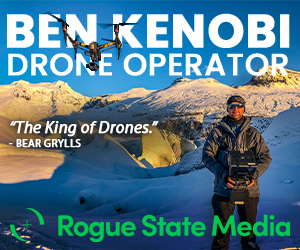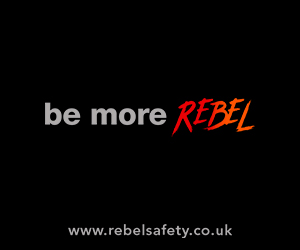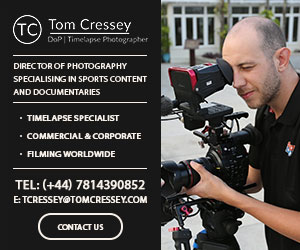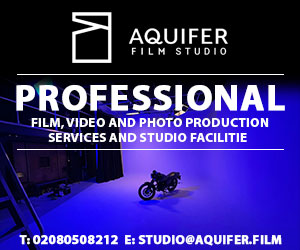Broadcast News
29/09/2015
Holidays In The Maldives Everyone?

It is well known that the volume of video being produced and distributed is increasing at an almost exponential rate.
So everyone producing content must be rather wealthy by now – after all you're probably making 10x the volume of content than you were 10 years ago so you must be getting paid 10x more to do this?
What, this is not the case?
Coming back to reality, in most cases your company is probably paid roughly the same amount to produce/process all the SD, HD, iPad, Android, web etc. variants as it was paid for the HDCAM SR tape of 10 years ago – or perhaps paid less.
Of course, much of the explosion in media volumes is user-generated content so not really relevant to the professional broadcast industry.
Formats and PCs on the up; income down
But considering only the professional broadcast industry, the volume, formats and types of content have gone up enormously and continue to go up exponentially. Compared with 10 or 15 years ago, when the HDCAM SR tape was 'it', you are now possibly/probably producing an SD and HD version, versions for iPhone, iPad, Android, streaming, website, VOD, regionalised versions (sometimes with modified content and with different language tracks)… and so on, for at least some of your content.
Plus, desktop computing power has got so powerful that the post-production requirements of the vast majority of content (excluding really heavy VFX and major movies) can be dealt with on a relatively inexpensive computer, so that someone working out of their bedroom can bid for most of this work at a much lower price. It is not the case that such a person won't do a good job but this is a whole new set of competitors to the larger, more established post-production companies.
It is pretty obvious that these trends are only going one way, so the larger more established companies in the broadcast sector have to do everything possible to streamline workflows and increase throughput to continually bring costs down.
Differentiation in a crowded market
I would argue that the greatest differentiator the more established post-production companies have is the breadth and depth of their creative skill and experience and perhaps the greater scale/throughput for the larger post-production companies.
This would suggest that you should be doing everything possible to give your people freedom to create, taking away from people any mundane task that can be automated and/or done reasonably by a computer rather than a person. And of course the creative aspects that are likely to be a lot more interesting and enjoyable than the technical minutiae.
Obvious things, such as changing how you do rendering. Rather than manually selecting each format in turn that you want to render out of your favourite NLE, instead just render out a master ‘mezzanine’ file. This goes into watch folders that have previously been set up with the batch version of the encoder that comes with the NLE, so that the different versions you need are all produced automatically.
For simply making different formats this works fine, but the problem is that the various formats you have to deliver often have more variation than can be covered in the simple batch encoder. For example you may need to add in colour bars and black sequences for some deliveries, and remove them for others. Or change the audio track formats, or audio levels. Trying to deal with these variations in a manual way is not only time-consuming, it is likely to lead to errors (which will take yet more time).
For this you are better off using a dedicated transcoder which can take your mezzanine file and correctly produce all the different versions, with these wrinkles duly processed. Yes, it will cost money to get this sort of transcoder but this should save you doing all this manual work.
QC - a game of two halves
After the content has been produced the next logical part to deal with is the QC. Normally there will be two parts to this: firstly, dealing with the technical delivery specifications. Things such as frame rates, resolutions, bit rates, video and audio levels, time codes, video and audio codec details, metadata, dropouts in the video or audio, or problems in the video quality (e.g. blockiness). I could go on but frankly this is really boring for a person to have to deal with.
The second part is content checking. Is this for pre-9pm transmission? Is it going to a region where the content should have been edited in some way? Content checking will need to be done by a person for the foreseeable future but it can usually be a faster-than real-time quick scan through the file.
The problem comes with trying to do the first part, i.e. all the technical QC in a manual way, using old tools like waveform monitors or open source software like MediaInfo to look at technical parameters. Doing this misses out a lot of the necessary technical checks, plus it is tedious as the person must do it completely correctly. Worse than this, it is expensive and slow to do manually.
And remember, if you are doing the technical QC in this way, you will need to have a person looking at not only the input master mezzanine but also the 10 output variants of the same content.
If it is boring doing the technical checks once, you lose the will to live after doing the same thing more than 10 times over on the same content. And even if you like boredom, doing this is just too expensive and slow.
There is a better way
As with the transcoding, we would argue that is far better and more efficient to use automated QC software for this part of the process.
For real efficiency, the obvious thing to do is set up watch folders so that the outputs of the transcoder automatically go to input watch folders of the automated QC.
With good auto QC software such as Vidchecker, you only need to do the checking-for-content manually. This is the fastest step, saving enormously on time. Yes, it will cost initially to invest in the auto QC software, but the savings in the medium term are substantial. Vitally, it leaves the people to do the creative things that really add value.
For larger, more established organisations, it provides a chance to gain back some or all of the low-cost ground that is lost to the one-man band. Plus, it is a great differentiator to be able to provide an official QC certificate, such as required by some UK broadcasters for AS-11 DPP deliveries.
Even if you automate your workflows as far as possible in the way described above, realistically it probably means that your wished-for hammock in The Maldives will still remain empty a while longer. But at least your business will be more secure, interesting and enjoyable for the future.
www.vidcheck.com
This article is also available to read at BFV online.
So everyone producing content must be rather wealthy by now – after all you're probably making 10x the volume of content than you were 10 years ago so you must be getting paid 10x more to do this?
What, this is not the case?
Coming back to reality, in most cases your company is probably paid roughly the same amount to produce/process all the SD, HD, iPad, Android, web etc. variants as it was paid for the HDCAM SR tape of 10 years ago – or perhaps paid less.
Of course, much of the explosion in media volumes is user-generated content so not really relevant to the professional broadcast industry.
Formats and PCs on the up; income down
But considering only the professional broadcast industry, the volume, formats and types of content have gone up enormously and continue to go up exponentially. Compared with 10 or 15 years ago, when the HDCAM SR tape was 'it', you are now possibly/probably producing an SD and HD version, versions for iPhone, iPad, Android, streaming, website, VOD, regionalised versions (sometimes with modified content and with different language tracks)… and so on, for at least some of your content.
Plus, desktop computing power has got so powerful that the post-production requirements of the vast majority of content (excluding really heavy VFX and major movies) can be dealt with on a relatively inexpensive computer, so that someone working out of their bedroom can bid for most of this work at a much lower price. It is not the case that such a person won't do a good job but this is a whole new set of competitors to the larger, more established post-production companies.
It is pretty obvious that these trends are only going one way, so the larger more established companies in the broadcast sector have to do everything possible to streamline workflows and increase throughput to continually bring costs down.
Differentiation in a crowded market
I would argue that the greatest differentiator the more established post-production companies have is the breadth and depth of their creative skill and experience and perhaps the greater scale/throughput for the larger post-production companies.
This would suggest that you should be doing everything possible to give your people freedom to create, taking away from people any mundane task that can be automated and/or done reasonably by a computer rather than a person. And of course the creative aspects that are likely to be a lot more interesting and enjoyable than the technical minutiae.
Obvious things, such as changing how you do rendering. Rather than manually selecting each format in turn that you want to render out of your favourite NLE, instead just render out a master ‘mezzanine’ file. This goes into watch folders that have previously been set up with the batch version of the encoder that comes with the NLE, so that the different versions you need are all produced automatically.
For simply making different formats this works fine, but the problem is that the various formats you have to deliver often have more variation than can be covered in the simple batch encoder. For example you may need to add in colour bars and black sequences for some deliveries, and remove them for others. Or change the audio track formats, or audio levels. Trying to deal with these variations in a manual way is not only time-consuming, it is likely to lead to errors (which will take yet more time).
For this you are better off using a dedicated transcoder which can take your mezzanine file and correctly produce all the different versions, with these wrinkles duly processed. Yes, it will cost money to get this sort of transcoder but this should save you doing all this manual work.
QC - a game of two halves
After the content has been produced the next logical part to deal with is the QC. Normally there will be two parts to this: firstly, dealing with the technical delivery specifications. Things such as frame rates, resolutions, bit rates, video and audio levels, time codes, video and audio codec details, metadata, dropouts in the video or audio, or problems in the video quality (e.g. blockiness). I could go on but frankly this is really boring for a person to have to deal with.
The second part is content checking. Is this for pre-9pm transmission? Is it going to a region where the content should have been edited in some way? Content checking will need to be done by a person for the foreseeable future but it can usually be a faster-than real-time quick scan through the file.
The problem comes with trying to do the first part, i.e. all the technical QC in a manual way, using old tools like waveform monitors or open source software like MediaInfo to look at technical parameters. Doing this misses out a lot of the necessary technical checks, plus it is tedious as the person must do it completely correctly. Worse than this, it is expensive and slow to do manually.
And remember, if you are doing the technical QC in this way, you will need to have a person looking at not only the input master mezzanine but also the 10 output variants of the same content.
If it is boring doing the technical checks once, you lose the will to live after doing the same thing more than 10 times over on the same content. And even if you like boredom, doing this is just too expensive and slow.
There is a better way
As with the transcoding, we would argue that is far better and more efficient to use automated QC software for this part of the process.
For real efficiency, the obvious thing to do is set up watch folders so that the outputs of the transcoder automatically go to input watch folders of the automated QC.
With good auto QC software such as Vidchecker, you only need to do the checking-for-content manually. This is the fastest step, saving enormously on time. Yes, it will cost initially to invest in the auto QC software, but the savings in the medium term are substantial. Vitally, it leaves the people to do the creative things that really add value.
For larger, more established organisations, it provides a chance to gain back some or all of the low-cost ground that is lost to the one-man band. Plus, it is a great differentiator to be able to provide an official QC certificate, such as required by some UK broadcasters for AS-11 DPP deliveries.
Even if you automate your workflows as far as possible in the way described above, realistically it probably means that your wished-for hammock in The Maldives will still remain empty a while longer. But at least your business will be more secure, interesting and enjoyable for the future.
www.vidcheck.com
This article is also available to read at BFV online.
More Content Management Stories
01/04/2019
Rohde & Schwarz To Present R&S PRISMON A/V Monitoring And IP Baseband Multiviewer Solutions
Rohde & Schwarz is to present its latest R&S PRISMON A/V monitoring and IP baseband multiviewer solutions at NAB 2019. The firm will present its field
Rohde & Schwarz To Present R&S PRISMON A/V Monitoring And IP Baseband Multiviewer Solutions
Rohde & Schwarz is to present its latest R&S PRISMON A/V monitoring and IP baseband multiviewer solutions at NAB 2019. The firm will present its field
27/09/2018
Introducing Cosmos Technology Broadcast Systems Ltd
TV as content will never go away, but its format and devices are constantly changing. As TV becomes more digitized and smart, the line between TV and
Introducing Cosmos Technology Broadcast Systems Ltd
TV as content will never go away, but its format and devices are constantly changing. As TV becomes more digitized and smart, the line between TV and
15/05/2018
Cutting Edge Technology And Innovative Solutions Unveiled At NAB 2018
Despite temperatures soaring to 30 degrees in Las Vegas, a record number of visitors attended the world's largest convention which encompasses the con
Cutting Edge Technology And Innovative Solutions Unveiled At NAB 2018
Despite temperatures soaring to 30 degrees in Las Vegas, a record number of visitors attended the world's largest convention which encompasses the con
11/04/2018
DRILLARIUM: Large Scale Playout
The current broadcast environment requires hundreds of channels to be supervised by a single operator. Vector 3 has created DRILLARIUM, the tool for t
DRILLARIUM: Large Scale Playout
The current broadcast environment requires hundreds of channels to be supervised by a single operator. Vector 3 has created DRILLARIUM, the tool for t
06/04/2018
Chart Your Future With PROVYS Scheduling
As every ship's captain recognises, it is very important to know exactly where we are heading, together with how, when and at what cost. Successful na
Chart Your Future With PROVYS Scheduling
As every ship's captain recognises, it is very important to know exactly where we are heading, together with how, when and at what cost. Successful na
07/03/2018
PlayBox Technology To Demonstrate Latest Advances At NAB
PlayBox Technology will exhibit the latest advances to its Neo and CloudAir broadcast channel branding and playout solutions at the NAB Show (07-12 Ap
PlayBox Technology To Demonstrate Latest Advances At NAB
PlayBox Technology will exhibit the latest advances to its Neo and CloudAir broadcast channel branding and playout solutions at the NAB Show (07-12 Ap
12/02/2018
SWISS TXT Revolutionises Live Subtitling Market With SaaS Solution
SWISS TXT has revolutionised the live subtitling market with an SaaS solution. The service was first used for MTG TV Norway at the European Handball C
SWISS TXT Revolutionises Live Subtitling Market With SaaS Solution
SWISS TXT has revolutionised the live subtitling market with an SaaS solution. The service was first used for MTG TV Norway at the European Handball C
24/11/2017
PlayBox Technology Neo Powers New HD Channel at main.tv
main.tv, one of Bavaria's leading regional broadcasters, has chosen PlayBox Technology Neo as the core playout system for its new high definition tele
PlayBox Technology Neo Powers New HD Channel at main.tv
main.tv, one of Bavaria's leading regional broadcasters, has chosen PlayBox Technology Neo as the core playout system for its new high definition tele
23/08/2017
Cloud And AI To Scare The Industry At IBC Again
Everyone knows about penetration by IT technologies in the sphere of broadcast engineering. Although the IT and engineering campuses are still poles a
Cloud And AI To Scare The Industry At IBC Again
Everyone knows about penetration by IT technologies in the sphere of broadcast engineering. Although the IT and engineering campuses are still poles a
23/08/2017
Workflows Need To Change To Unlock The Benefits of IP
The primary advantage of an IP-based system is the convergence of multiple signal formats onto a comprehensive, distributed IP switch fabric that seam
Workflows Need To Change To Unlock The Benefits of IP
The primary advantage of an IP-based system is the convergence of multiple signal formats onto a comprehensive, distributed IP switch fabric that seam















